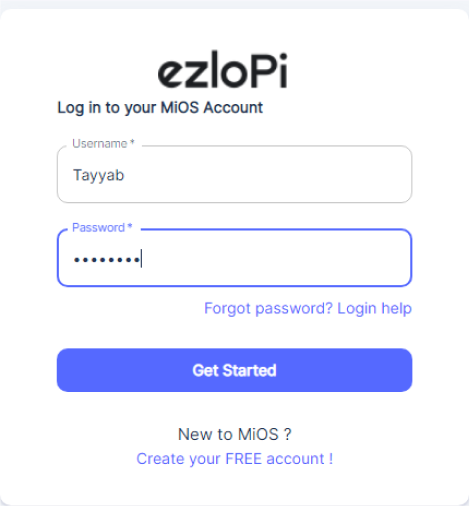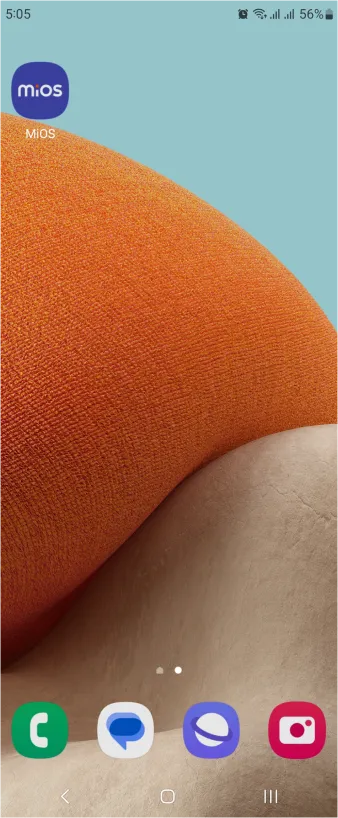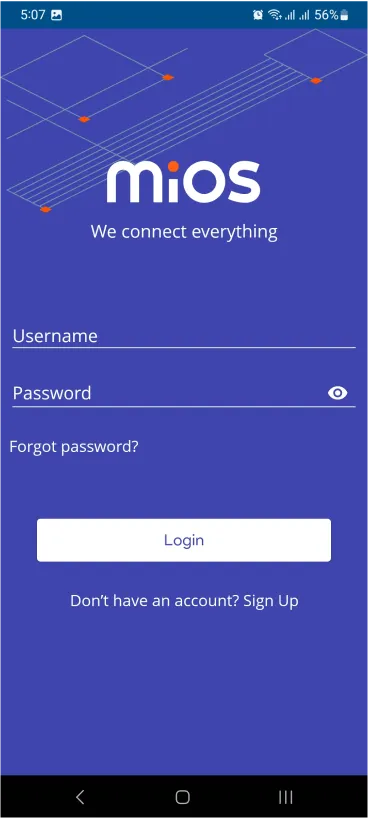
Make your smart home shine with EzloPi innovation!
Regulate your smart home temperature with DS18B20 temperature sensor and DC Fan
The EzloPi smart devices provide automation through simple, customizable use with our open-source EzloPi platform, making daily life easier and improving human-machine interactions.
Before moving into this example, it is very important to know about the device registration, provisioning and converting the ESP32 device into an EzloPi device along with knowledge of Web Flasher, MiOS Mobile Application for Android/iOS and the MiOS Web Application.
1. About this example
In this project, we will interface the KY-001 sensor module based on the DS18B20 digital temperature sensor which is a versatile digital sensor capable of accurately measuring temperature in various environments with the EzloPi platform. This will provide the users with an easy and seamless solution for monitoring and controlling the temperature of your smart home, room or office space. This integration allows users to implement temperature-based actions to enhance the smart home experience. The temperature of your smart space can be remotely monitored easily by using the MiOS smart application.
Here, we have demonstrated this project with a DC fan for convenience to showcase the capabilities of the EzloPi smart platform, this can be replaced with an AC fan and 220V source for a practical implementation.
2. Circuit Setup & Interfacing
The following components are required for interfacing with the EzloPi device:
- ESP32 as an EzloPi smart device.
- KY-001 module (DS18B20 digital temperature sensor).
- Single channel relay module.
- 12V DC Fan
The wiring diagram of ESP32 32 pin is represented as follows::


The following connections are made in order to complete the circuit setup.
From ESP32 (32 pins) to the temperature sensor module and to the Relay & DC Fan:
- Connect the GND from the ESP32 to the negative (-ve) pin as GND of the DS18B20 module and also to the (-ve) pin as GND of the relay module.
- Connect the 3V3 pin from the ESP32 to the VDD pin of DS18B20 module for voltage supply and middle pin (+ve) of the relay module.
- Connect the D15 pin from the ESP32 to the Signal ‘S’ pin of the DS18B20 module.
- Connect the D5 pin from the ESP32 to the signal ‘S’ pin of the relay module.
- Connect -ve wire from the external DC source terminal block to the COM pin of the relay module.
- Connect NO of the relay module to the -ve terminal of the DC fan.
- Connect +ve wire from the external DC source terminal block to the other +ve terminal of the DC fan.
3. Interfacing the DS18B20 Temperature sensor module using the EzloPi Web Flasher
Set up your device/hardware by visiting config.ezlopi.com

- Log in using the credentials which you just set earlier while signing up.

- Now, click on the Connect Device button and a pop-up window will appear.

Now, select COM Port to which your ESP32 device is connected. In our case, the COM3 port is used.
Click Connect.

- If you are new to this and it's your first time configuring, select Create new Device ID. Enter Wifi SSID and Wifi Password.
- In the Device Configuration, tab click on One Wire..

- A window will open for inputting the following parameters:
- Set a device name of your choosing. In our case, we will set it to DS18B20.
- Set Out GPIO to 15.
- Set Device subtype to DS18B20 Sensor.
- Now Click the Apply button.
- Again in the Device Configuration, tab click on Digital Output.

- A window will open for inputting the following parameters:
- Set a device name to Fan.
- Set Device subtype to Relay.
- Set OUT GPIO to 5.
- Set Resistor to PULL UP.
- Set the default value to LOW.
- Then Click Apply Button.
- After clicking the apply button you can see a table of your setting in the device configuration tab.
- Press the Flash Device button.
- A window will appear on the bottom right side of the screen displaying “Please press BOOT button while flashing begins.”

- Hold the BOOT button down until the next window appears on the bottom right side of the screen which says “Installation prepared. Please release the boot button now.”

- Release the BOOT button from your ESP32 when this pop-up on the bottom right window appears.

- After some time, a popup will appear saying Device Flashed Successfully! This means that your device has been set up successfully.
4. MiOS Web Application
- After configuring the controller with the EzloPi web flasher, head to ezlogic.mios.com

- Use the same credentials to log in that you used for configuring the controller with the web flasher.

- Now, on the MiOS web dashboard, you will be able to see the tiles for the DS18B20 and the fan. These tiles will indicate the status of the fFan depending on the temperature value being detected by the DS18B20 sensor.
MeshBots:

- On the left side of the screen under Automation, click on MeshBots.

- On meshbot screen, click on Create new MeshBot button present on the top right corner of the screen.
- After clicking on Create new MeshBot you will see this now under Automation MeshBot click on Local.

- On the next screen you will see that we can create a name of our choosing, in this case we write it as Test002.

- In the trigger tap you can set the TRIGGER for your device and in the ACTION tab you can set the action to be performed based on the trigger which you have created.

- Set these things in TRIGGER section:
- Set Node Type to Device.
- Set the Node to DS18B20.
- Set the Capability to Temp.
- Set the Comparator to Greater (>).
- Set the Value Type to value.
- Set the value to 28.

- Set these values in ACTION section.
- Click on TRUE.
- Set Node Type to Device.
- Set Controllable Type to Fan.
- Set the Capability Type to switch.
- Set the Value to true.
- Set Action to Immediately.

- Now Click on FALSE.
- Set Node Type to Device.
- Set Controllable Type to Fan.
- Set the Capability Type to switch.
- Set the Value to false.
- Set Action to immediately.
- Now Click the Save button.

- After clicking the save button you can see this screen on the top right corner of the screen.

- Here you can see your saved MeshBot. Now click on Dashboard.

- On the MiOS web dashboard, the DS18B20 connected to the EzloPi device is displaying the ambient temperature readings. It is also showing the temperature as 28°C which is our threshold value, the DC fan remains off.

- Here, the dashboard shows that when temperature increases from 28°C to 31°C, the DC fan automatically turns on. Now both our conditions which were set in the meshbot are working.
5. MiOS App
You can download the MIOS Android app from the Google Play Store and Apple App Store.
- After downloading the app, proceed to install the application and open it.

- Using the MIOS mobile application, create a new Ezlo Cloud account using the sign-up option. If you already have an account, you may proceed to log in.

- After successfully logging in, you will be able to see the number of controllers connected such as a lamp, fan, or any other device in the MiOS app. Tap on any controller of your desired ID:

- You will be able to see the status of your controller whether it is online or offline. Access the device dashboard, and tap the device. The following view of the dashboard will appear:

- As we can see above in the MiOS mobile app dashboard, the temperature sensor module tile can be observed, which is showing the current temperature value. The DC Fan will not turn on because the temperature is 28°C, which is our threshold value.

- Now as we can see above, when the temperature goes above our set threshold value, the fan turns on.

eZlopie Products A single-channel 5V relay module $00.00

eZlopie Products Momentary switch $00.00

eZlopie Products Level Shifter Module (BSS138) $00.00

eZlopie Products ESP32
$00.00

eZlopie Products AC Lamp and Holder
$00.00












